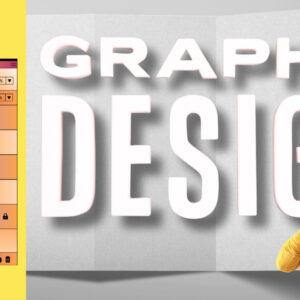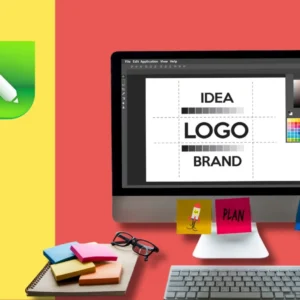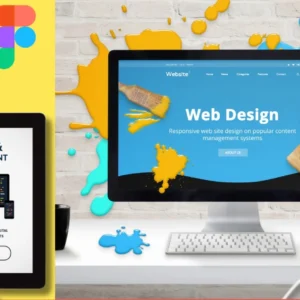
In 2025, knowing how to price design work is crucial for Indian beginners navigating the thriving $50,000 crore digital market, per IAMAI, to earn fair compensation for creating logos, posters, or social media graphics. Value-based pricing, which focuses on the value delivered to clients rather than hours worked, empowers new designers to charge confidently. This beginner-friendly guide explores how to price design work using value-based strategies, tailored for India’s vibrant creative scene. For example, pricing a festival ad based on its sales impact can boost your income. Whether you’re freelancing in Kolkata or learning in a small town, these insights will help you set profitable rates. Ready to price like a pro? Let’s dive into value-based pricing for new designers in 2025!
What is Value-Based Pricing in Design?
Value-based pricing in design involves setting rates based on the value your work provides to clients, such as increased sales or brand visibility, rather than time spent. In India, where 70% of users engage on mobile (per IAMAI), a well-designed ad can drive significant revenue, justifying higher fees. For instance, a logo boosting a client’s sales by ₹1 lakh warrants more than an hourly rate. Unlike cost-plus or hourly pricing, value-based pricing aligns with client outcomes. Understanding how to price design work this way ensures fair, profitable rates.
Why Value-Based Pricing Matters for New Designers
Value-based pricing is essential for new designers to maximize earnings and build credibility. First, it reflects the impact of your work, allowing higher rates than hourly billing. Next, it aligns with India’s competitive design market, where clients value results. For example, a social media graphic driving engagement is worth more than time-based fees. However, misjudging value can lead to underpricing. Mastering how to price design work with value-based strategies sets you apart in 2025.
Key Factors in Value-Based Pricing
Several factors influence how to price design work using value-based pricing. Client business size determines their budget; startups may pay ₹5,000, while corporates pay ₹50,000. Project impact, like a logo increasing sales, justifies higher fees. Market demand for designs, like mobile-first ads, affects rates, per Creative Bloq’s 2025 trends. For instance, a festival campaign with high ROI commands premium pricing. Combining these factors ensures fair, client-focused rates.
Benefits of Value-Based Pricing
Using value-based pricing to price design work offers multiple advantages. It boosts earnings by tying fees to client outcomes, not hours. It also builds client trust, showing you understand their business goals. For example, a ₹10,000 poster driving ₹1 lakh in sales feels fair to clients. Additionally, it aligns with 2025 trends favoring outcome-driven freelancing, per 99designs. This approach enhances your reputation in India’s design industry.
Common Pricing Challenges in India
Indian designers face challenges when learning how to price design work. Beginners often undervalue their services due to lack of confidence or market awareness. Negotiating with cost-conscious clients, common in India, can be tough. For instance, underpricing a logo at ₹1,000 may devalue your skills. However, free tools and research make value-based pricing accessible. Strategic approaches overcome these hurdles for new designers.
Tools and Resources for Pricing Design Work
These beginner-friendly tools and resources help Indian designers price design work effectively in 2025:
- Canva: Free or ₹500/month (Pro), creates professional designs to justify value-based rates.
- Figma: Free plan, ideal for UI/UX mockups to showcase high-impact work.
- Google Trends: Free, identifies high-demand design niches like festival graphics.
- Behance: Free, showcases projects to demonstrate value to clients.
- Dribbble Pricing Guides: Free community insights on freelance rates, tailored for India.
These tools support value-based pricing without breaking the bank.
6 Steps to Price Design Work with Value-Based Pricing
Follow this beginner-friendly guide to price design work using value-based pricing in India for 2025.
1. Research Client Business Goals
Understand your client’s objectives, like increasing sales or brand visibility, using Google or LinkedIn. For example, research a local brand’s festival campaign goals. Spend 2-3 hours analyzing their market and revenue potential. This helps estimate the value of your design. Clear insights justify higher rates.
2. Identify High-Impact Projects
Focus on projects with measurable outcomes, like social media ads or logos. For instance, a Diwali ad driving ₹50,000 in sales supports a ₹5,000 fee. Use Google Trends to find trending niches like “festival marketing India.” Spend 2-3 hours selecting high-value projects. This aligns pricing with client impact.
3. Estimate Project Value
Calculate the potential ROI of your design, such as sales or engagement increases. For example, if a poster could generate ₹1 lakh, charge 5-10% (₹5,000-₹10,000). Use client discussions or industry benchmarks from Dribbble. Spend 1-2 hours estimating per project. This ensures fair, value-based pricing.
4. Set Competitive Rates
Research market rates on platforms like WorknHire; logos range from ₹2,000-₹20,000 in India. For instance, charge ₹5,000 for a small business logo with moderate impact. Adjust based on client size and project scope. Spend 2-3 hours benchmarking rates. Competitive pricing reflects value and market standards.
5. Communicate Value to Clients
Present your pricing by highlighting benefits, like how a design boosts sales. For example, explain how a ₹7,000 ad could drive ₹70,000 in revenue. Use Canva to create mockups showcasing impact. Spend 1-2 hours preparing pitches per project. Clear communication justifies higher fees.
6. Build a Value-Based Portfolio
Compile 5-10 projects, like posters or logos, showcasing high-impact designs on Behance (free). For instance, include a Rakhi ad with estimated ROI to demonstrate value. Optimize for India’s mobile-first audience (70% mobile users). Spend 5 hours organizing your portfolio. This proves your pricing expertise to clients.
Total Time: 15-20 hours initially for research and setup, ongoing for refinement
Overcoming Common Pricing Challenges
New designers face obstacles when learning how to price design work. Here’s how to tackle them:
- Underpricing: Charging too low devalues skills. Solution: Research rates on Dribbble.
- Client Pushback: Clients demand lower fees. Solution: Highlight ROI in pitches.
- Lack of Confidence: Beginners doubt their worth. Solution: Use Canva mockups to show impact.
- Market Competition: Rates vary widely. Solution: Specialize in niches like festival graphics.
For example, researching rates prevents underpricing a ₹5,000 logo. Strategic solutions ensure fair compensation.
Inspiration from Digital Marketing Scaling
The provided document on scaling a freelance digital marketing business offers inspiration. Like digital marketers specializing in SEO, designers can niche in high-impact areas like festival ads to justify value-based pricing. The document’s use of free tools like Canva aligns with budget-conscious design strategies. Its emphasis on networking via X Spaces applies to designers connecting on LinkedIn. For instance, a designer’s ₹5,000 ad can mirror a marketer’s ROI-driven approach. Thus, cross-industry strategies enhance pricing success.
2025 Trends in Design Pricing
In 2025, pricing design work evolves with trends, per Creative Bloq and 99designs. AI-driven tools, like Canva’s Magic Studio, create high-impact mockups to justify rates. Mobile-first designs, critical for India’s 70% mobile users, command premium fees. X posts highlight bold, culturally relevant graphics for festivals. For example, a ₹7,000 Diwali ad with animations boosts client sales. Staying updated ensures competitive, value-based pricing.
Why Value-Based Pricing Matters in India
India’s design industry, with digital ad spending projected at ₹50,000 crore by 2026, per IAMAI, rewards designers who price based on value. Clients seek high-ROI designs for mobile ads or print campaigns. For example, a ₹5,000 logo driving brand growth is a fair deal. Value-based pricing builds trust and maximizes earnings. Mastering how to price design work is key to success.
Budgeting for Design Work
Pricing design work affordably starts with minimal tools. A laptop (₹20,000-₹50,000) runs free tools like Canva or Figma. Free resources like Google Trends and Behance eliminate research costs. A ₹2,000/year domain on Hostinger hosts a portfolio. For example, a ₹20,000 setup supports value-based pricing. Budget wisely to focus on client impact.
Scaling Your Design Pricing Strategy
Once you master how to price design work, scale your strategy for growth. Offer high-impact projects, like UI designs or festival campaigns, at ₹5,000-₹20,000. Promote services on WorknHire or Fiverr, emphasizing ROI. For instance, specialize in mobile-first graphics for Indian brands. Use Instagram with #IndianDesign to attract clients. Scaling builds a profitable career.
Fixed vs Value-Based Pricing
Fixed pricing (e.g., ₹3,000 per logo) is simple but limits earnings. Value-based pricing, tied to client outcomes, supports higher fees (₹5,000-₹20,000). For example, a ₹7,000 ad driving ₹70,000 in sales is value-driven. Fixed pricing suits small projects; value-based fits high-impact work. Start with value-based to maximize income.
Finding Pricing Inspiration
Draw inspiration from Indian culture, like vibrant festival aesthetics, to create high-value designs. For example, a Holi ad with bold colors justifies a ₹5,000 fee. Browse Behance or Design in India for impactful projects. Keep a Notion board for pricing ideas. Inspiration fuels your ability to price design work effectively.
Conclusion
Learning how to price design work with value-based pricing in 2025 empowers Indian beginners to earn fair rates in a booming market. From researching client goals to building a high-impact portfolio, this step 1 to 6 guide ensures profitable pricing. Use our roadmap to set rates, pitch value, and showcase skills. For example, price a festival ad at ₹5,000 to reflect its sales impact. Avoid pitfalls like underpricing or weak pitches. Ready to shine? Start pricing design work strategically today and thrive in India’s vibrant design market! Join YourPaathshaala, Raipur’s leading skill development institute. Contact us at 📞 +91-8305209520 for more information!







